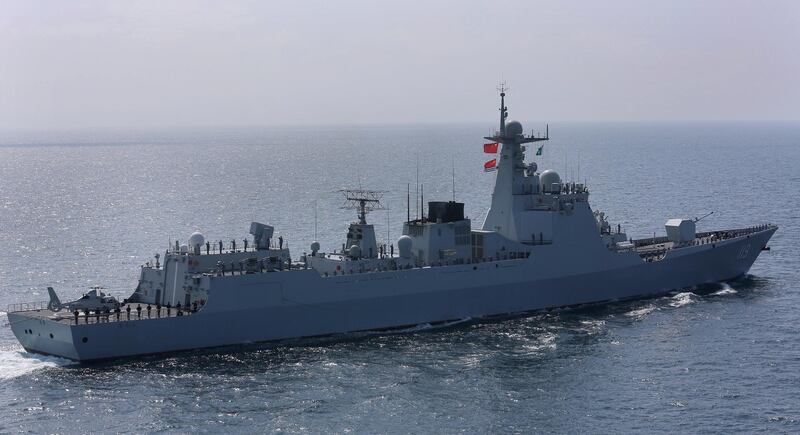Global military spending increased significantly despite the global pandemic damaging economies, a leading defence publication reported.
There is now greater focus on the growing rivalry between the US and China as their defence budgets accounted for almost two thirds of the increase in global defence spending in 2020.
China is now seen as a major military power, rapidly developing its armed forces to be able to extend its global reach, particularly with its navy, the Military Balance publication revealed.
Beijing is on target to have a military force able to fight and win wars and project power globally by 2049, its authors said.
Despite the ravages of Covid-19, defence spending grew 4 per cent on the year to reach $1.83 trillion, the International Institute for Strategic Studies said in its annual publication.
China’s spending was greater than the combined defence budget increases in all other Asian countries. “China is also developing the capabilities needed to support military operations at range,” the report said.
The number of Chinese medium-sized warships doubled to 55 in the past five years and its large amphibious vessels also doubled to six, with many more warships commissioned.
More importantly, China is now developing the logistics support that would enable it to maintain its forces many kilometres from home. The number of fleet support ships has gone from seven to 12 in five years and its Y-20 heavy lift aircraft numbers also doubled.
“Potentially we will see further developments of long-range deployments as far as China is concerned,” said Henry Boyd, a research fellow at IISS.
“An interesting one will be when a Chinese aircraft carrier group makes a long-range deployment of significance, potentially into the Indian Ocean.”
While he stated that the US still holds “considerable capability overall”, its dominance is “being challenged”. Although the US Navy had 9,000 vertical launch missiles on its surface ships to China's 1,000, retirement of ageing American battle cruisers would significantly reduce the total.
“The fact that Chinese shipyards have been outstripping US ones in terms of tonnage of naval vessel launches in recent years is also challenging the US Navy,” Mr Boyd said.
There is a suggestion that with deployments in the Middle East and Europe that America’s guns are “pointing in the wrong direction”, he said. The US now views China as its number one threat followed by Russia, then jointly by Iran and North Korea, the analyst said.
Although European defence spending grew by 2 per cent in 2020 it was less than the previous year’s increase of 4.1 per cent. But if government commitments to 2021 budgets were adhered to “Europe could be the region with the fastest growth in global defence spending”, the report said.
Much of the increase was down to Britain’s proposed £16 billion ($22.45bn) additional defence budget that was earmarked for warships and potentially leaves the British Army’s deficiencies unresolved, the author said.
“While the futures of the Royal Navy and Royal Air Force appear assured, not so the British Army, where unde-funding and procurement problems mean that it can only deliver half of the armed forces that were originally planned for 2025,” said Ben Barry, a senior fellow at IISS.
With consistent reports of tank and armoured infantry shortages, as well as under-recruitment, he said that the army could barely field a single fighting division, suggesting only rapid investment would "reverse this potential capability decline".
“There is a considerable risk that the Army's single warfighting division could lose its military capability with the US and Nato,” he said.








